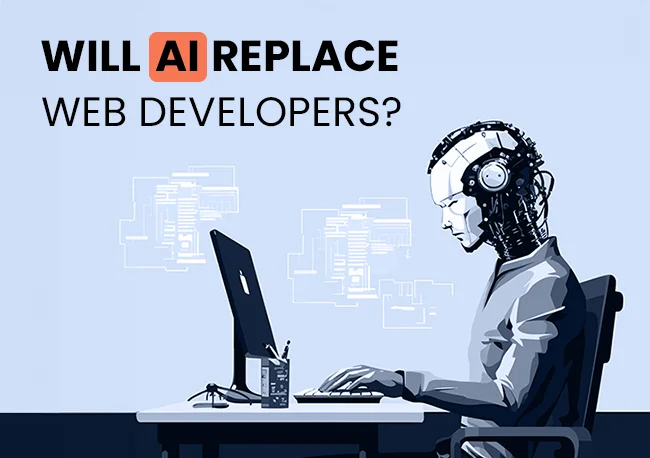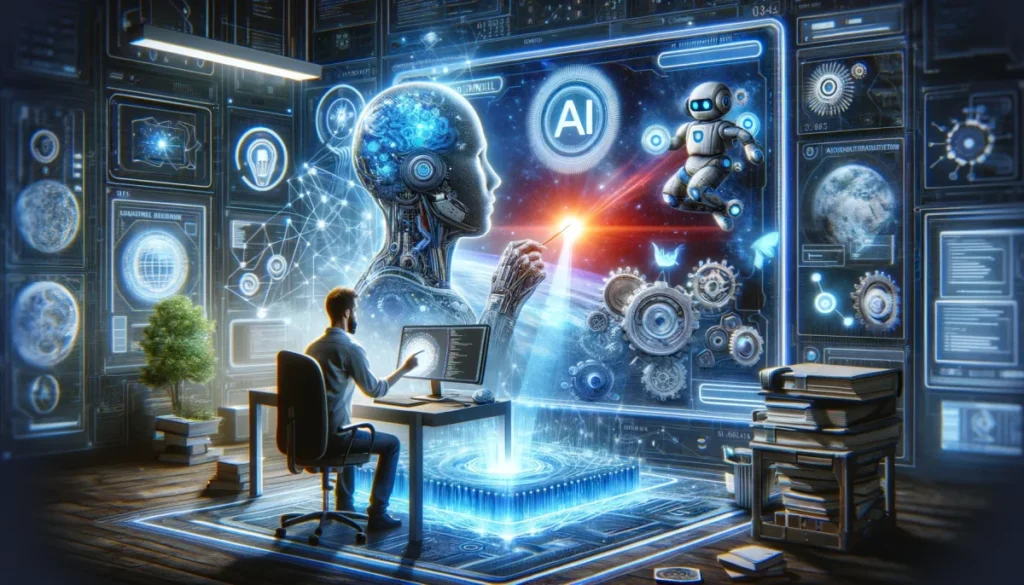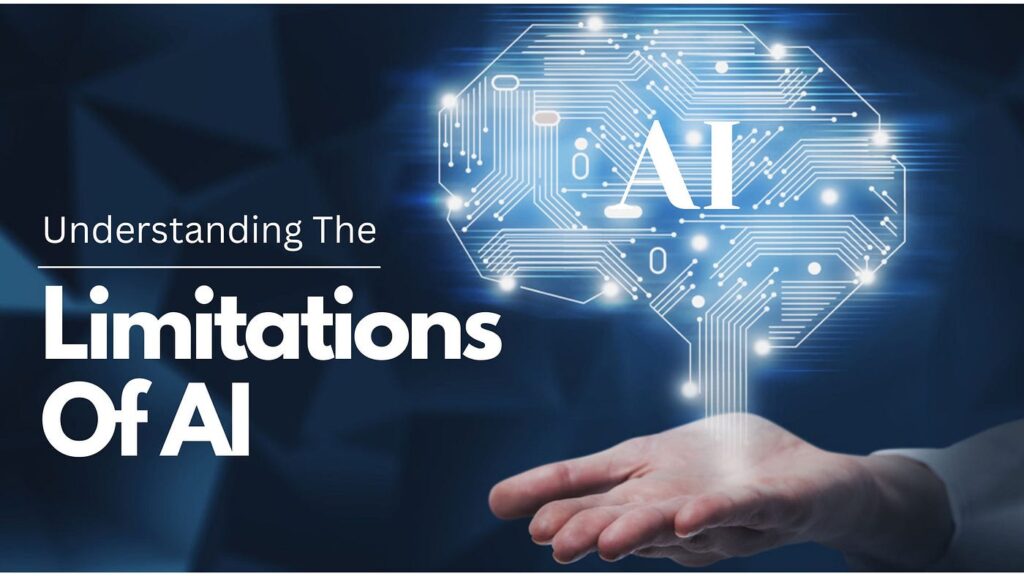
As artificial intelligence (AI) continues to advance, many industries are feeling the impact of this transformative technology. Web development is no exception. With the emergence of AI-driven tools and platforms, a common question arises: Will web development be replaced by AI? Let’s explore this topic to understand the potential and limitations of AI in web development.
The Rise of AI in Web Development

AI is increasingly being integrated into various aspects of web development. From automated coding assistants to design tools, AI is making the development process faster and more efficient web development be replaced by AI. Here are some notable AI-driven applications in web development:
- Code Generation: Tools like GitHub Copilot utilize AI to assist developers by suggesting code snippets and functions as they write, reducing the time spent on routine tasks.
- Website Builders: Platforms such as Squarespace employ AI to help users create websites without needing extensive coding knowledge. These tools often use templates and customizable features to streamline the design process.
- Testing and Quality Assurance: AI can automate testing processes, identifying bugs and issues more quickly than manual testing, which helps maintain high-quality standards.
Advantages of AI in Web Development

- Increased Efficiency: AI tools can significantly reduce the time spent on coding and testing, allowing developers to focus on more complex tasks.
- Cost-Effective Solutions: Businesses can save on development costs by using AI-driven platforms that require less human intervention.
- Accessibility: AI-powered website builders make it easier for non-developers to create functional and attractive websites, democratizing web development.
Limitations of AI in Web Development and digital marketinghttps://digitalzubair.com/what-digital-marketing-do/

Despite the advantages, there are several limitations to consider:
- Complexity and Creativity: Web development often requires a high level of creativity and complex problem-solving that AI currently cannot replicate. Custom solutions tailored to specific business needs require human expertise.
- Understanding User Experience: While AI can analyze data, understanding user experience and emotional design often requires human insight that AI lacks.
- Continuous Learning: The web development landscape is always changing, with new technologies and trends emerging. AI tools need regular updates and training to keep up, which relies on human developers.
The Future: Collaboration Between Humans and AI

Rather than replacing web developers, AI is more likely to augment their skills and capabilities. The future of web development will likely involve a collaboration between human creativity and AI efficiency. web development be replaced by AI. Here’s what that could look like:
- Enhanced Development Tools: AI can take care of routine tasks, allowing developers to concentrate on innovation and complex problem-solving.
- Improved Design Processes: Designers can leverage AI tools for quick prototyping and user testing, enhancing the overall design process.
- Focus on Strategy: With AI handling the technical aspects, developers can focus on strategy, user experience, and creative direction.
Conclusion
While AI is poised to revolutionize many aspects of web development, it is unlikely to replace human developers entirely. Instead, AI will serve as a powerful ally, enhancing productivity and efficiency while allowing developers to focus on creativity and innovation. As the technology continues to evolve, the most successful web development teams will be those that embrace AI as a collaborative tool rather than a replacement.